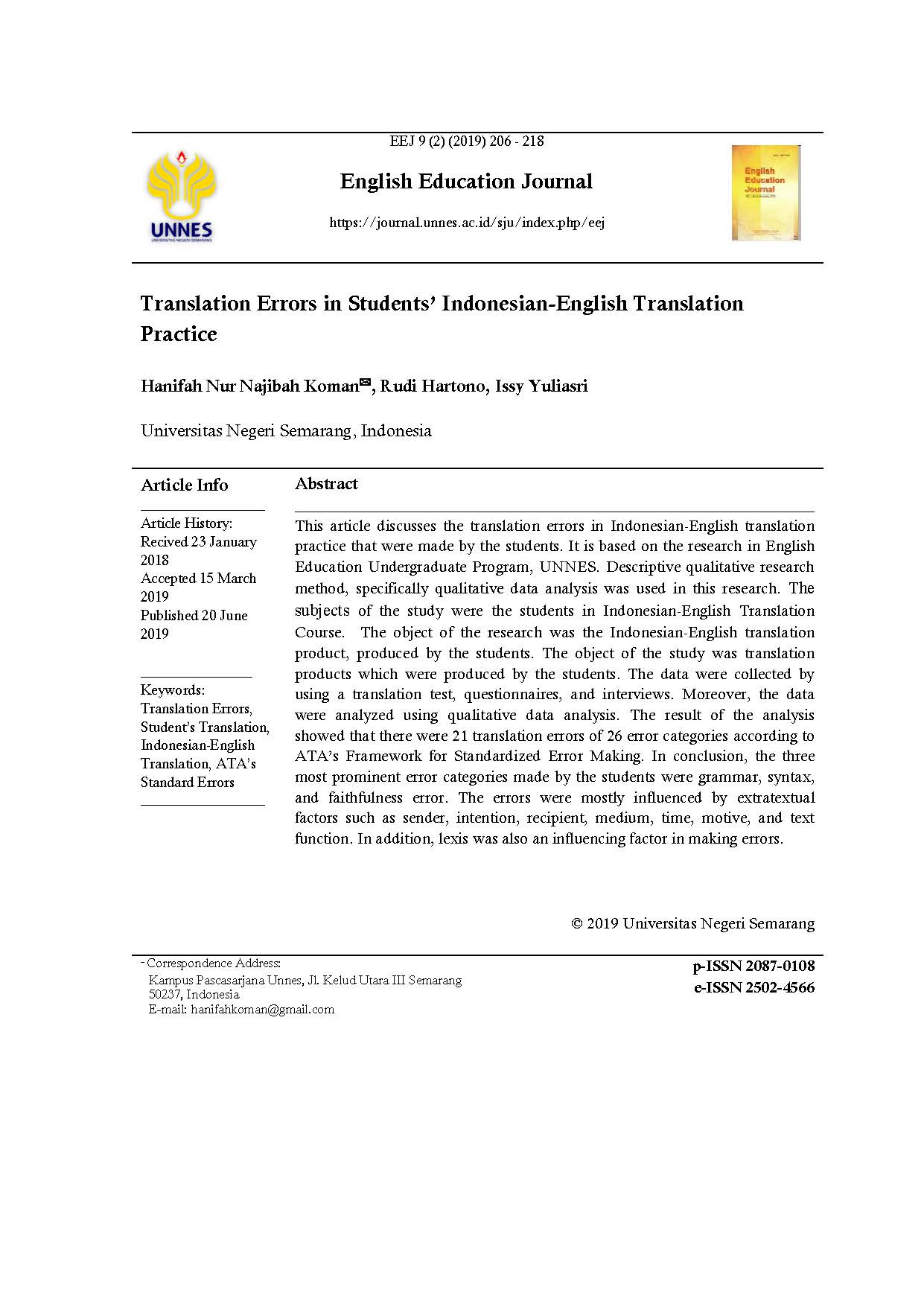Translation Errors in Students’ Indonesian-English Translation Practice
##plugins.themes.academic_pro.article.main##
Abstract
This article discusses the translation errors in Indonesian-English translation practice that were made by the students. It is based on the research in English Education Undergraduate Program, UNNES. Descriptive qualitative research method, specifically qualitative data analysis was used in this research. The subjects of the study were the students in Indonesian-English Translation Course. The object of the research was the Indonesian-English translation product, produced by the students. The object of the study was translation products which were produced by the students. The data were collected by using a translation test, questionnaires, and interviews. Moreover, the data were analyzed using qualitative data analysis. The result of the analysis showed that there were 21 translation errors of 26 error categories according to ATA’s Framework for Standardized Error Making. In conclusion, the three most prominent error categories made by the students were grammar, syntax, and faithfulness error. The errors were mostly influenced by extratextual factors such as sender, intention, recipient, medium, time, motive, and text function. In addition, lexis was also an influencing factor in making errors.
